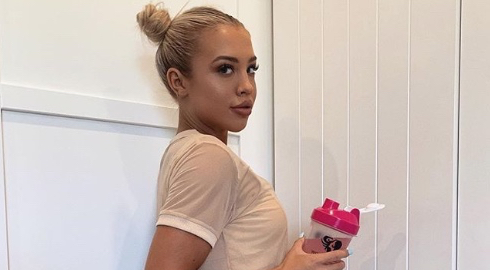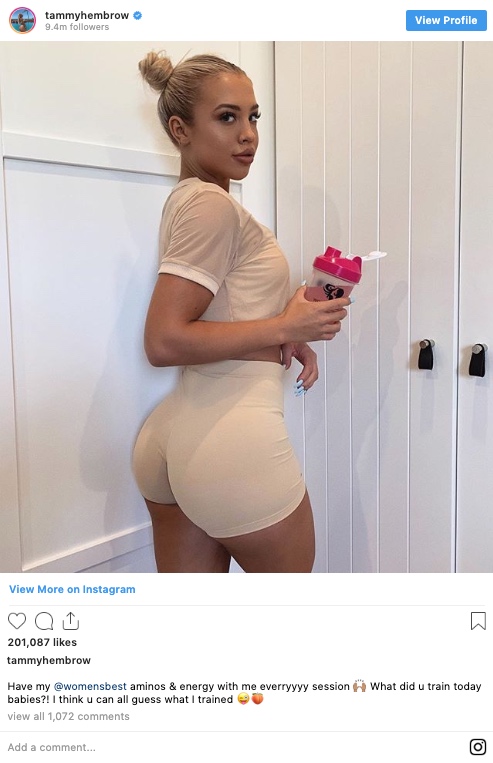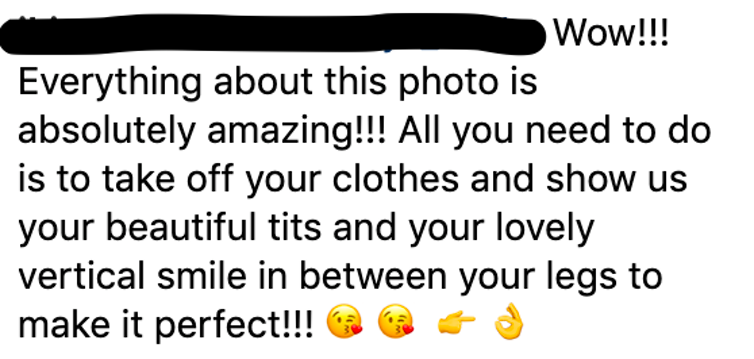
How highly sexualised imagery is shaping ‘influence’ on Instagram – and harassment is rife
Instagram influencers are increasingly using sexualised images to build their personal brands, and this is being accompanied by more and more sexual harassment, write Jenna Drenten, Lauren Gurrieri and Megan Tyler in this cross-posting from The Conversation.
Australians are some of the most active social media users in the world and Instagram is particularly popular. One in three of us have an account, with more than 9,000,000 monthly active users. The rise of Instagram reflects our increasingly visual culture, with 45% of Australians having taken a selfie and uploaded it to social media.

But Instagram isn’t just a place for personal photos, it’s big business. The platform is the birthplace and breeding ground of influencer marketing: a relatively new, multi-billion dollar industry, projected to grow from US$6 billion in 2018 to US$10 billion in 2020.
Influencers generate digital content and gain the attention of a “following” on social media through representations of their everyday lives, in which various commodities and brands play a vital role. The larger the audience, and the more attention they receive, the greater the monetisation potential.
Most influencers, are women, who aspire to build a personal brand. There are more than 558,000 influencers on Instagram who have more than 15,000 followers.
Theirs is a precarious form of work, with none of the traditional workplace protections and they can can spend an extraordinary amount of time and effort generating the “perfect shot” to upload. It’s a job that is always “on”, with the platform functioning 24/7 and delivering a constant stream of notifications.
The body plays a crucial role in influencers’ selfies. Conforming to rigid standards of attractiveness and femininity is fundamental to their gaining attention. This means a lot of work for them but also has broader cultural effects in shaping attitudes about body image.
We analysed 172 female influencers’ social media pages over a period of four months. They ranged from women who willingly promote brands with no remuneration to those who market themselves as a personal brand. Our sample of influencers was drawn internationally and sourced from “shoutout pages”, which act as virtual currency to build popularity and thus gain attention. We analysed the images, interactions, and comments of the influencers studied.
We found a continuum of pornified self-representations by these social media influencers on Instagram. This ranged from “softer” references – where influencers pose to highlight sexualised body parts and employ “porn chic” gestures such as gently pulling their hair, touching their parted lips and squatting with legs spread to the camera – to images that were hard to differentiate from mainstream commercial pornography.
Here, pornified representations grab viewers’ attention with the goal of being monetised to sell products, such as protein powder, gummy vitamins, or detox tea.
Our data does not show an enormous breadth of ways in which women might wish to be sexual, but rather a fairly monotonous repetition of “sexiness” and sexual availability that is shaped by porn chic.
The women in our study ranged from having hundreds of followers to millions. Those with a higher number of followers were associated with a more explicitly pornified aesthetic – sometimes using the Instagram platforms to redirect viewers to more direct paid-access pornography on external sites such as OnlyFans.com or private messaging applications like Snapchat and WhatsApp.
But all of this monetised attention comes at a cost of significant sexual harassment, which many argue is poorly policed by Instagram. Monitoring the women’s social media feeds, we found that many female influencers are subject to sexually aggressive comments, objectifying messages from followers, and a lack of privacy in their personal lives. Influencers in our study were subject to sexual solicitation and even physical threats.
Such comments range from: “I would love your art work but it’s your bum I want”, or “love to spank and kiss your gorgeous ass”, to the more aggressive “Turn around before I take out my dick and beat you…”
Rebuking harassment or deleting hostile comments also comes at a cost for influencers. More engagement, including these kinds of comments, results in more potential attention for a given post. This, in turn, is directly tied to their ability to monetise influence.
Hence, we found that reading such harassment, and making the choice to not delete it, simply becomes “part of the job”. The fear of losing a partnership with a brand is always a concern, so influencers build their audience by engaging with followers in upbeat, positive and convivial ways.
The intensity, volume and public nature of this harassment makes social media influencers particularly vulnerable. They do not have the support of a traditional workplace and employer in dealing with these constant and inescapable interactions.
As well as having negative consequences for the influencers themselves, the trend towards a pornified aesthetic also has consequences for gender equality, more broadly. It’s an aesthetic that positions women and girls as existing for men’s sexualised consumption.
![]() Jenna Drenten, is assistant professor of marketing at Loyola University Chicago, Lauren Gurrieri, is senior lecturer in marketing at RMIT University, and Meagan Tyler is senior lecturer at RMIT University. This article is republished from The Conversation under a Creative Commons license. Read the original article.
Jenna Drenten, is assistant professor of marketing at Loyola University Chicago, Lauren Gurrieri, is senior lecturer in marketing at RMIT University, and Meagan Tyler is senior lecturer at RMIT University. This article is republished from The Conversation under a Creative Commons license. Read the original article.





Tis a very interesting subject and something that we will look back on in 10 years time and understand whether it worked or not? Sex sells; always has done. Suddenly there is a long tail of faces vs Cindy Crawford, Sarah Jessica Parker and some b grade chat show host from Channel 9…
Anyone can publish and you can be your own agent. Scary if you are dealing with the abuse yourself.
Wait until all these ‘influencers’ age in years to come!!! With their bodies not holding up as they used to and not as attractive anymore and what will they do as a ‘job’ then? I guess strike while the iron is hot.
I never thought that it would be a bonus to have a large derriere to sell anything from shampoo to shoes. There is a big gap between this and being a Victoria Secret model.
Whatever we aspire to, however we see ourselves, the vast majority of us are sexual beings. Most women, particularly young women, enjoy displaying their sexuality (in varying degrees) both for others and for themselves. This is not depravity or blatant soliciting, it is a natural as breathing, drinking, and eating.
Social media is a new toy, but it might also be called the invention of the devil, anyone may make a statement, post an image or a video, and instantly it is available to the world. The crude comments made (mainly by men) are a sad reflection upon the general education and etiquette of our society.
The generation of instant gratification – where you strive both personally and professionally on the number of “likes” and comments you receive.
What a time to be alive…
Lip fillers, butt implants, botox, breast enlargement, make-up caked on an inch thick…all before they’re 30 or 40! Talk about clones.
This appears not to be a representative set of influencers if the sample was taken from ‘shout out’ pages and many were then subsequently linking to porn sites!! Whilst this is a segment of the influencer population there are many other influencers who are working on having a unique aesthetic, opinion, showcasing their passion, their family, their slice of life etc. Brands should choose to work with influencers who represent similar values and if a brand chooses to work with an over sexualised profile then hopefully it’s the right fit but not for most brands.
Oh yeah, because men have never put their bodies on the line for the consumption desires of women……oh wait.